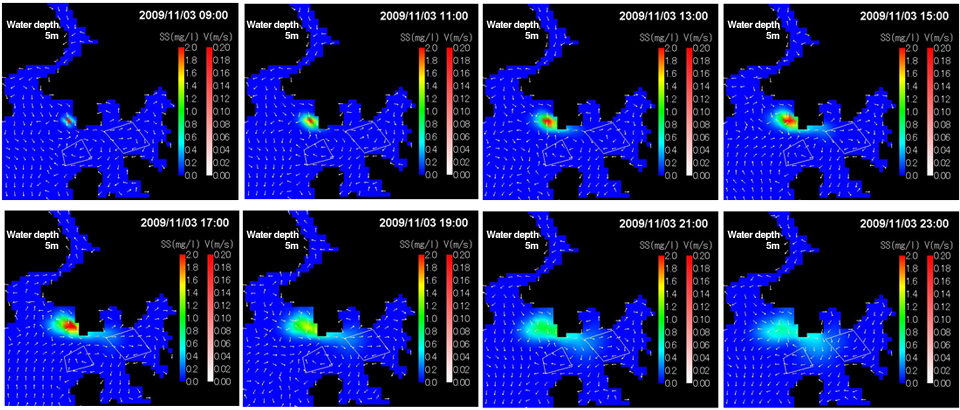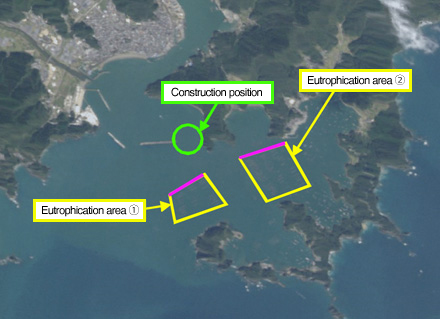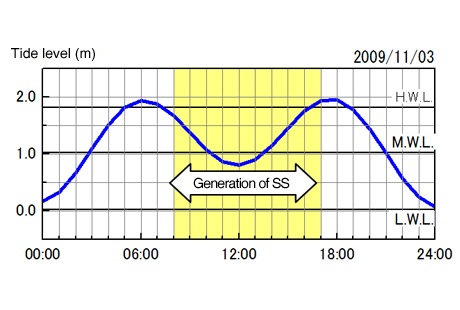Three-Dimentional Predictive Program for the Water Environment of the Estuary Bay: WESTech-3D
The WESTech-3D is a three-dimensional tidal current-water quality simulation program which was developed by Professor Emeritus Masahiko Isobe of Tokyo University. Under the guidance of Prof. Isobe, Toyo Construction introduced WESTech-3D and performed flow condition calculations to clarify the factors that cause blue tides in Osaka Bay. Toyo also added independent functions which are used, for example, in predicting the diffusion of turbidity (suspended solids: SS) caused by offshore construction. As a result, this technology is a useful tool for construction management, etc. to protect the environment (water quality) in offshore work.

Example of calculation of diffusion of suspended solids (SS) due to construction (SS concentration reaching eutrophication areas is small)

Calculation conditions of suspended solids (SS) (location relationship of eutrophication areas adjacent to construction area)

Tide level during calculation (generation of SS at construction location during time period from 8:00 to 17:00)
Features
- WESTech-3D consists of a three-dimensional tidal current model and an ecosystem-water quality model.
- The three-dimensional tidal current model calculates currents mainly due to tides, considering the density of sea water in order to reproduce thermal stratification, which has a large influence on currents in sea areas.
- The ecosystem-water quality model calculates changes in water quality (changes in DO, etc.) by modeling biological and chemical processes such as photosynthesis by phytoplankton, etc.
- In calculating diffusion of turbidity, changes in SS concentration due to advection, diffusion, and settling of SS are calculated for SS instead of the ecosystem model.
- Possible to make stable forecasting calculations over a long period of several months, considering daily changes in tide levels.